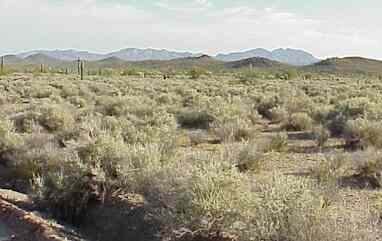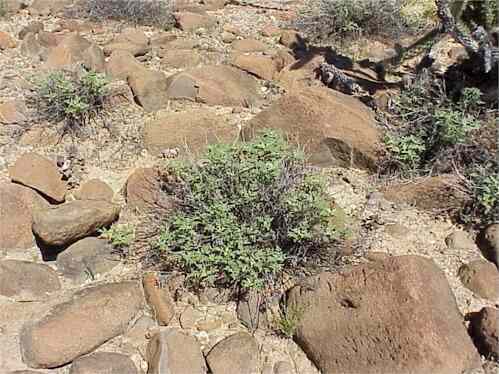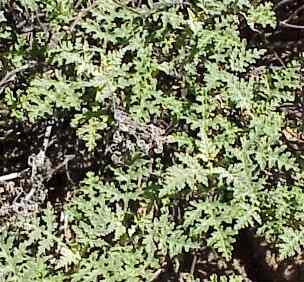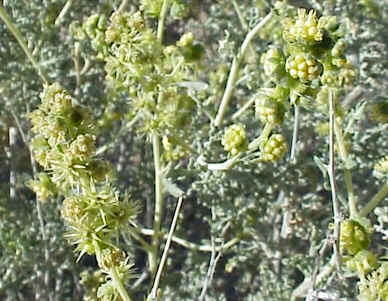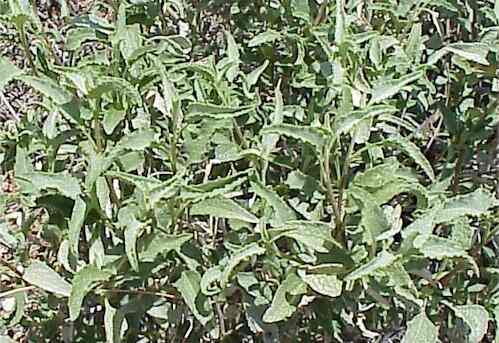BURSAGES In addition to big sagebrush - a dominant species in the Great Basin Desert - several other aromatic shrubs with grey-green foliage are found across the North American deserts. These are bursages (Ambrosia species) with seeds that have spiky projections so that they are dispersed by attachment to animals' fur. White bursage (Ambrosia dumosa)
White bursage is very common in the driest regions of the Sonoran and Mojave Deserts, where is can be the only major perennial plant apart from the similarly drought-tolerant creosote bush. It occurs frequently on fine silty or sandy soils. The leaves wither and are shed in periods of drought (often for most of the year).
Triangleleaf bursage (Ambrosia deltoidea) Triangle-leaf bursage is a dominant understorey shrub of the upper regions of the Sonoran Desert of Arizona, and an occasional shrub of other parts of the Sonoran Desert. It is not as drought-tolerant as white bursage. It characterisitically grows on slopes and rocky bajadas Click here for image, rather than flat silty areas.
The bursages are not heavily grazed by animals, but they have one important role in desert environments: they frequently act as nurse plants for fishhook and pincushion cacti, protecting the delicate cactus seedlings during their early years of development. |
